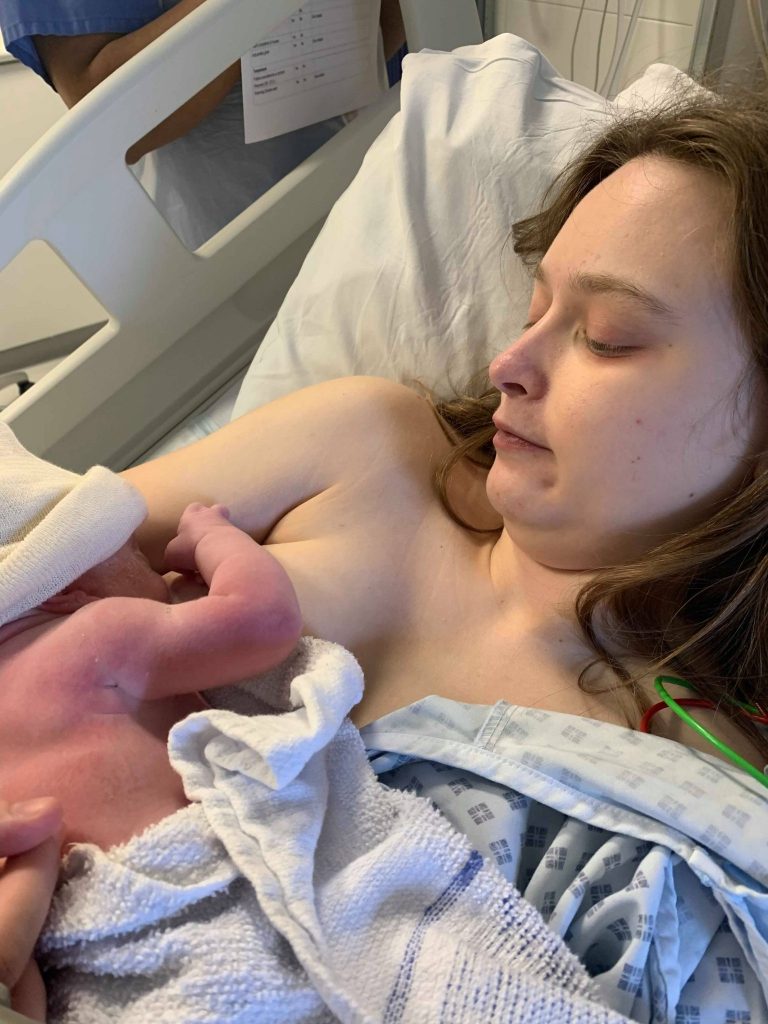After birth, it can sometimes be hard to get breastfeeding off to the best start. When you have a c-section it can be even more challenging to establish breastfeeding – especially if you end up having an emergency c-section which you were not planning for.
For c-section births, it’s good to know what you can expect and prepare for in terms of breastfeeding your baby. The likelihood is you will need good support from those around you to help you breastfeed and feel comfortable and confident doing so.
As April is Cesarean Awareness Month (CAM), we asked c-section mamas on Instagram what it was like breastfeeding after a c-section. What helped, what didn’t? What was the most challenging thing they encountered? We hope their comments and feedback help any perspective or new c-section mama navigate breastfeeding in those early days and weeks.
Getting comfortable to feed was difficult
It takes time for c-section mamas to recover from surgery. They need to rest and not exert themselves. For many mamas, it takes time and some trial and error in order to feed their babies comfortably. They have to be careful of their scar and not put too much pressure on their tummy.
- “I felt like I could never get comfortable…still going strong 18 months later though so something worked out.” says @francescarachel
- “Comfortable position is hard to find, use all the pillows to protect tummy not just the scar” advises @rhiann0nsjourne
- “Difficult at first, struggled to get comfortable but once I did I was absolutely fine.” says @hardlycurlycarly
Nursing pillows help alot
It was clear that nursing pillows were a game-changer for lots of these c-section mamas. It enabled them to feed comfortably – helping get baby in position whilst also protecting their tummy and scar. You can check out a range of nursing pillows here.
- “Nursing pillows works a treat…the after pains were the most uncomfortable with no 2 and 3” admits @elleelli82
- “A nursing /V shaped pillow kept the weight off the scar even weeks later” says Grace Redmond / @graceredders
- “Bit sore to get in a good position to start with. Nursing pillows are a dream for that.” says @jadevictoriawilson
Delay in milk coming in
One of the common challenges spoken about amongst c-section mamas is a delay with their milk coming in. A person who has had a vaginal birth is likely to see their milk come in on day 2 or 3 whilst it can be another few days for a person’s milk to come in if they have had a c-section. However, this varies from person to person.
- “My milk didn’t come in for 9 days” admits @mrsswhitesmith
- “Delayed milk production, lack of support, pushed to formula feed. 3 years later tho we did it.” says @meet_the_jones
- “Milk didn’t come in til day 6 so had big day 5 weight loss. But still going 5 months later!” says @mcb_uk
Harvesting colostrum whilst pregnant helped
Many mamas will be encouraged to express colostrum in the last few weeks of pregnancy (safe to do so from 36 weeks gestation) – especially if they are planning on having a c-section. Having colostrum to hand when baby is born can take the pressure off the new mother – especially if there has been complications at birth. They know baby will be fed their milk whilst they recover. You can find out more about antenatally expressing your milk here.
- “Tricky to latch at 1st but harvested colostrum so knew how to hand express which helped!” says @rosieisbet
- “Colostrum harvesting before elective c-section and hand expressed before putting baby to breast” advises @sassy_mck
- “Was never told about harvesting colostrum! Gutted. Will know for next time.” says @graceredders
The after-effects of surgery
Many mamas felt that the after-effects of their c-section surgery hindered their ability to get breastfeeding off to the best possible start. However, many were able to overcome this challenge and enjoy long and successful breastfeeding journeys with their little ones.
- “Breastfeeding was hard because the epidural and meds made both babies so sleepy” says April Robson from @thats_the_tea_mama
- “It was hard. I felt sick and out of it for the next 12 hours after surgery” says @lottiecarneysmith
- “Breastfeeding was difficult because I’d had a cat1 emergency so was out of it for a while. But we’re still going strong 3 months off his 3rd birthday.” says @rmlrealmammalife
